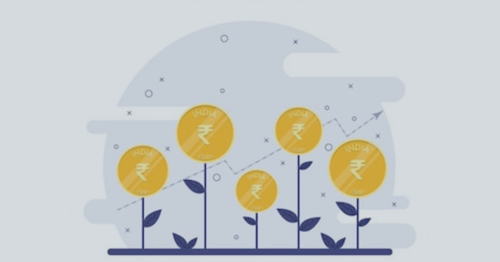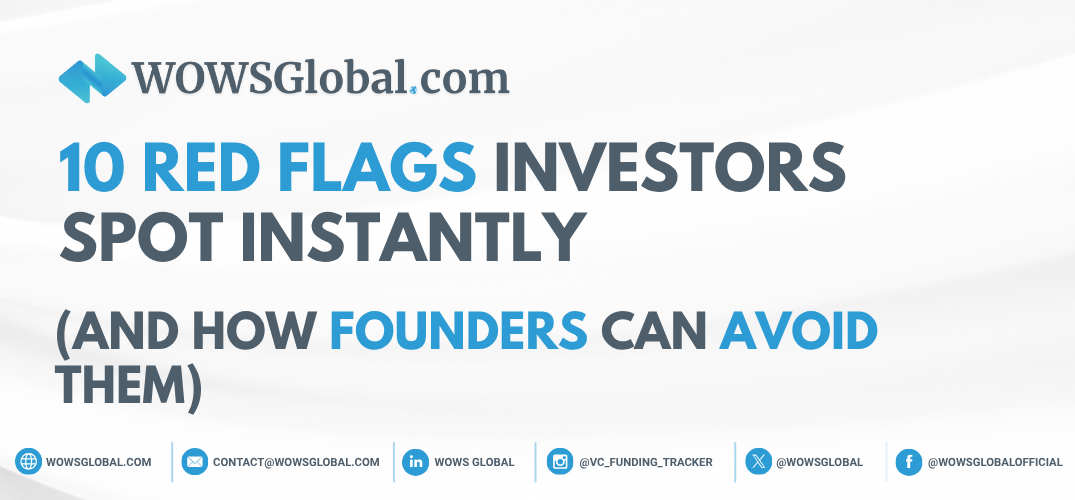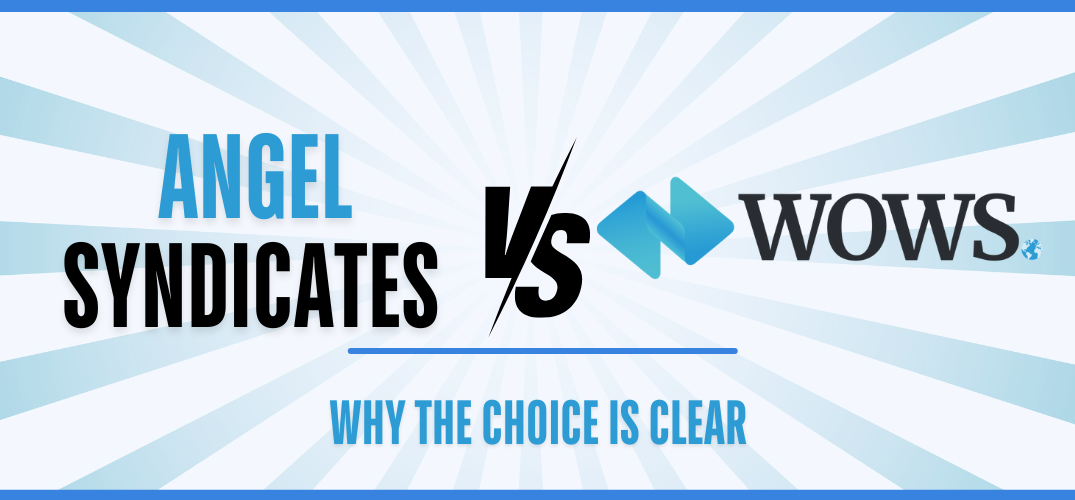The A-Z of Fundraising (Part: 3 I-N)
Fundraising Fundraising for Founders Fundraising Rounds Invisible Venture Capital

Part 3 – I to N

I is for:
Income Statement: This statement shows sales, expenses, and a company’s net profit over a certain period. An income statement is typically prepared quarterly or annually.
Incubator: Either a company or a facility that is designed to aid early-stage entrepreneurs using shared resources, expertise, intellectual capital, pitch/presentation training, and access to a network of investors. Incubators usually provide such services in exchange for equity in the company.
Initial Public Offering (IPO): This is seen as a classic exit strategy. It makes your company stock available to the general public. An IPO also means your company will be listed on an exchange.
Institutional Investors: These are dedicated financial entities. They invest on behalf of individuals and companies.
Intellectual Property (IP): Legal ownership of concepts or ideas. IP is classed as an intangible asset that has the potential to be much more important than any tangible asset.
Internal Rate of Return (IRR): This is a financial analysis metric. IRR is used to estimate the profitability of potential investments. It is a discount rate that makes the NPV (Net Present Value) of all cash flows equal to zero in a discounted cash flow analysis.
Investment Committee (IC): This refers to a group of partners at a VC (Venture Capital) company. They will make the final call on each of the company’s investments. In small funds, all partners in the firm will be part of the IC. In a bigger fund, it is often the case that the IC is only composed of the most senior partners.
Investment Period: This is the period a fund deploys the majority of its capital into portfolio companies. The typical period is between 3 and 5 years.
Investor Rights Agreement (IRA): A legal document. It is often introduced by VC firms or prospective investors when a company is seeking investment. An IRA is designed to protect investors’ interests.
Investor Updates: These updates are a powerful tool used to attract and engage investors. They can also be used to obtain additional assistance and funding.
Smart startup founders use an automated data-driven investor update system.
Invisible Venture Capital: In the venture capital world the term refers to funding obtained from angel investors. Invisible Venture Capital does not come from the usual venture financing sources.

J is for:
J-Curve: A J-Curve is an economic theory coined in the early 1960s and can be related to a wide variety of situations. In the context of companies and funding, it demonstrates how private equity funds begin with negative returns in their early years but then witness gains as they establish themselves. It encompasses both the investment period and the harvest period.
Private equity funds generally take early losses due to investment costs and management fees but as the funds mature they make previously unrealized gains. Examples of such huge rises come through M&A (Mergers and Acquisitions), IPOs (Initial Public Offerings), and Leveraged Recapitalization.
Joint Venture: This is an arrangement, partnership, or investment between a group of individuals or entities. It spans a limited period with the purpose being to achieve a specific objective.

K is for:
Key Employee: A key employee is one with either major company ownership and/or someone in a decision-making role. Key employees command either high monetary or with benefits compensation (sometimes both). It is usually the case that they also receive incentives in the form of special benefits both to join and to stay with the company.
Key Man Provisions: This is part of a limited partnership agreement that prohibits investments by the general partner should key executives no longer be involved in the fund, barring approval from limited partners.
Key Performance Indicators (KPI): Metrics used by a company to measure and track progress or success. KPI measurement details vary across industries and business sectors. They reflect a business’s strategic as well as operational initiatives and hold different priorities.
Knowledge Capital: This is classed as the intangible value of a company. It is made up of knowledge relationships, learned techniques, innovations, and procedures.
Startups that have key employees with specific skills, as well as access to the overall knowledge capital, can give the company an advantage. This can also be termed “intellectual capital”

L is for:
Late Stage: This is a startup company classed as being in existence for a noteworthy period. One that has proven it has a viable product or service and business model.
Late Stage Investment: The final stage of VC investing involves companies that have achieved strong revenue growth and are close to an exit. Because late-stage investments are less risky, the rate of return is typically lower. Series C funding rounds (and later) are usually categorized as late-stage.
Lead Investor: The first investor to come in and invest the largest amount of capital among all investors in the startup for substantial ownership. Lead investors represent other investors in a startup before, during, and after a fundraising round. They act as a link between the startup raising funds and other investors. It is common for them to get a seat on the board of directors to help the company raise its next round of funds.
A lead investor should ideally be an expert in the product or service a startup is offering or an individual who has spent significant time understanding the nuances of a startup’s business.
A reputable lead investor can be extremely influential in closing funding rounds as well as being a committed advisor. If founders are afforded a choice they should pick their lead investor carefully.
Letter Of Intent: A business document that outlines deal terms.
Leverage: This relates to using debt in an investment. It includes the acquisition and capital expenditures. General Partners use leverage to make improvements at portfolio companies to increase returns.
Leveraged Buyout: This is when either a person or a group of people take on debt to buy out the remaining shares of a company. By doing so they achieve ownership.
Liabilities: These are the debts and financial obligations of a company.
Liability: Founders note that this is the state of being legally responsible for something.
Limited Partner (LP): An investor who has little control over the management of a portfolio company or partnership in exchange for lesser restrictions on liquidation.
Liquidation: This is the process of turning securities into cash. Often seen as part of a company’s exit strategy.
Liquidation Preference: A key term for preferred shareholders because they are given priority in any liquidation event. In a startup’s case, the term “liquidation” can refer to the actual liquidation of a company through bankruptcy, dissolution, or when the company is sold. It should be noted that an IPO does not constitute a liquidation event.
Founders need to understand very clearly the liquidation preferences written into the agreed term sheet. Failure to do so can cost them dearly.
Liquidity Event: A liquidity event allows VC firms to realize either their losses or gains by liquidating owned equity in a company.
Lock-Up Period: This is a time window subsequent to an IPO. It relates to certain shareholders who are not allowed to sell their shares for a certain period. In a venture-backed IPO, the conventional lock-up period is between 90- and 180-days.
Long-Term Liabilities: Debts payable over a period of time that exceeds 1 year.
Low-Hanging Fruit: A term used for a product or service with a large, positive potential. One with few drawbacks. When related to startups this refers to an idea that is in a market area with low competition.

M is for:
Major Investor: Used in investment term sheets. A major investor puts more than a defined amount into any given funding round. This entitles them to specific information and/or voting rights.
Management Buyout (MBO): Funding that is provided for a management team to acquire either a business or a product.
Market Capitalization: The total monetary value of all outstanding shares. This is calculated as shares multiplied by the current price per share. Before an IPO, market capitalization is worked out by estimating a company’s future growth and through comparisons of similar public or private corporations.
Milestone: This is a benchmark or notable achievement. Founders should be raising enough funds to get through to their next major milestone. One milestone leads to another. As each milestone is achieved it should make it easier to attract follow-on investment. Conversely, missing a milestone will make it harder to attract follow-on investment.

N is for:
Negative Control Provisions: These are terms agreed upon as part of an investment round. They protect investors from any major adverse actions. Examples are the dissolution of the company or the sale of said company for $1. Negative control provisions do not come with the right to affirmatively control a company.
Net Asset Value (NAV): The NAV is calculated by adding the value of all investments in a fund and dividing them by the outstanding number of shares of that fund.
Net Income: The earnings of a company once all costs and expenses are deducted. Such expenses are wide-ranging. Examples are operating costs, general and administrative costs, selling, depreciation, interest expenses, and any taxes.
Net Worth: Value of total assets minus total liabilities.
If you are looking to get your fundraising efforts off to the best possible start please reach out to us at: contact@wowsglobal.com
Related Posts
-

Fundraising investor relations Traction Financials
10 Red Flags Investors Spot Instantly (And How Founders Can Avoid Them)
From vague problems to broken cap tables, these are the 10 signals that turn investors off—plus practical fixes so you can raise with confidence. -

Fundraising Angel Syndicates VC
The Battle of Angel Syndicates vs. WOWS Global: Why the Choice is Clear
WOWS Global vs. Angel Syndicates: A detailed comparison of costs, network depth, technology, and expert support. Learn why WOWS Global is the better choice for startup fundraising and scaling. -

Startups Fractional CFO Fundraising
Why Your Accounting Director Might Not Be Enough: The Surging Demand for Fractional CFOs in Startups
In the fast-paced world of startups, having an Accounting Director may not be enough. Discover why over 75% of pre-Series B startups are turning to fractional CFOs for strategic financial guidance that can make or break your growth trajectory. -

Early-Stage Investors Funding Funding Round Fundraising for Founders Investor
Shh! Don’t Share These Fundraising Insider Secrets
Startup founders need to fasten their seatbelts and prepare for a roller-coaster ride if they are to achieve success. It is a straight fact that founders will find themselves wearing many hats to get their venture up, running, and thriving. -

Fundraising for Founders A - Z of Fundraising Fundraising
A-Z of Fundraising for Founders (Part: 5 T-Z)
Founders of startups have a lot to contend with as they formalize their ideas, turn them into reality, and then proceed to grow their business healthily. -

Fundraising for Founders Fundraising Funding for Founders
The A-Z of Fundraising (Part: 4 O-S)
Founders of startups have a lot to contend with as they formalize their ideas, turn them into reality, and then proceed to grow their business healthily. As you progress, the world (and art!) of successful fundraising will become more and more important. Similar to all business sectors, startup founders will encounter fundraising abbreviations, acronyms, terms that speak for themselves, and others that are far more obscure. To help you grasp exactly what these terms mean, here’s a comprehensive A-Z of fundraising from WOWS Global. This handy reference guide will help every founder talk the fundraising talk with confidence. Because we are digging deep to deliver everything related to fundraising this guide will be split into easy-to-read parts. This is part 4 covering the letters O to S:
